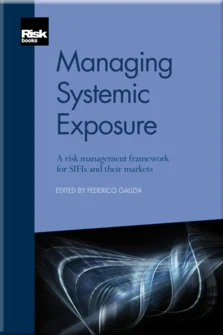Appendix: G-SIB Regulatory and Supervisory Regime
Andrea Cremonino
Managing Systemic Exposure: A Risk Management Framework for SIFIs and their Markets
SIFIs and the Financial Crisis
Remuneration at Large Financial Services Firms
What Drives Banking Industry Ratings? An Empirical Analysis
Leverage: A Research Agenda for SIFIs
Bank Off-balance-sheet Leverage: Some Lessons from the Financial Crisis
Systemic Wrong-way Risk
The OTC Derivatives Market: Risks and Regulations
Balance Sheet Management for SIFIs
Managing Concentration Risk
Capital Adequacy Ratio: A Managerial Framework
Appendix: G-SIB Regulatory and Supervisory Regime
All banks are equal, but some banks are more equal than others11Author’s adaptation from George Orwell, “Animal Farm”
The regulatory response to the fallout from the Lehman Brothers’ default and ensuing wave of costly bank recapitalisation has followed two main lines. On the one hand, there was a tightening of risk measures (the so-called Basel 2.5), a stricter definition of capital and the increasing of capital requirements supplemented by binding rules for liquidity (Basel III). On the other hand, there was an explicit identification of the financial institutions that were considered “systemically relevant” and should be made less prone to default; if they did default, it was crucial that they did so without recourse to taxpayers’ money and with minimal disruption to the financial markets. There was a dawning recognition of the threat to financial stability from interconnectedness among financial institutions as a prime contagion mechanism for the crisis.
This initiative was led by the Financial Stability Board (FSB), tasked by the G20. In November 2011, the G20 endorsed the “Key
Copyright Infopro Digital Limited. All rights reserved.
As outlined in our terms and conditions, https://www.infopro-digital.com/terms-and-conditions/subscriptions/ (point 2.4), printing is limited to a single copy.
If you would like to purchase additional rights please email info@risk.net
Copyright Infopro Digital Limited. All rights reserved.
You may share this content using our article tools. As outlined in our terms and conditions, https://www.infopro-digital.com/terms-and-conditions/subscriptions/ (clause 2.4), an Authorised User may only make one copy of the materials for their own personal use. You must also comply with the restrictions in clause 2.5.
If you would like to purchase additional rights please email info@risk.net











